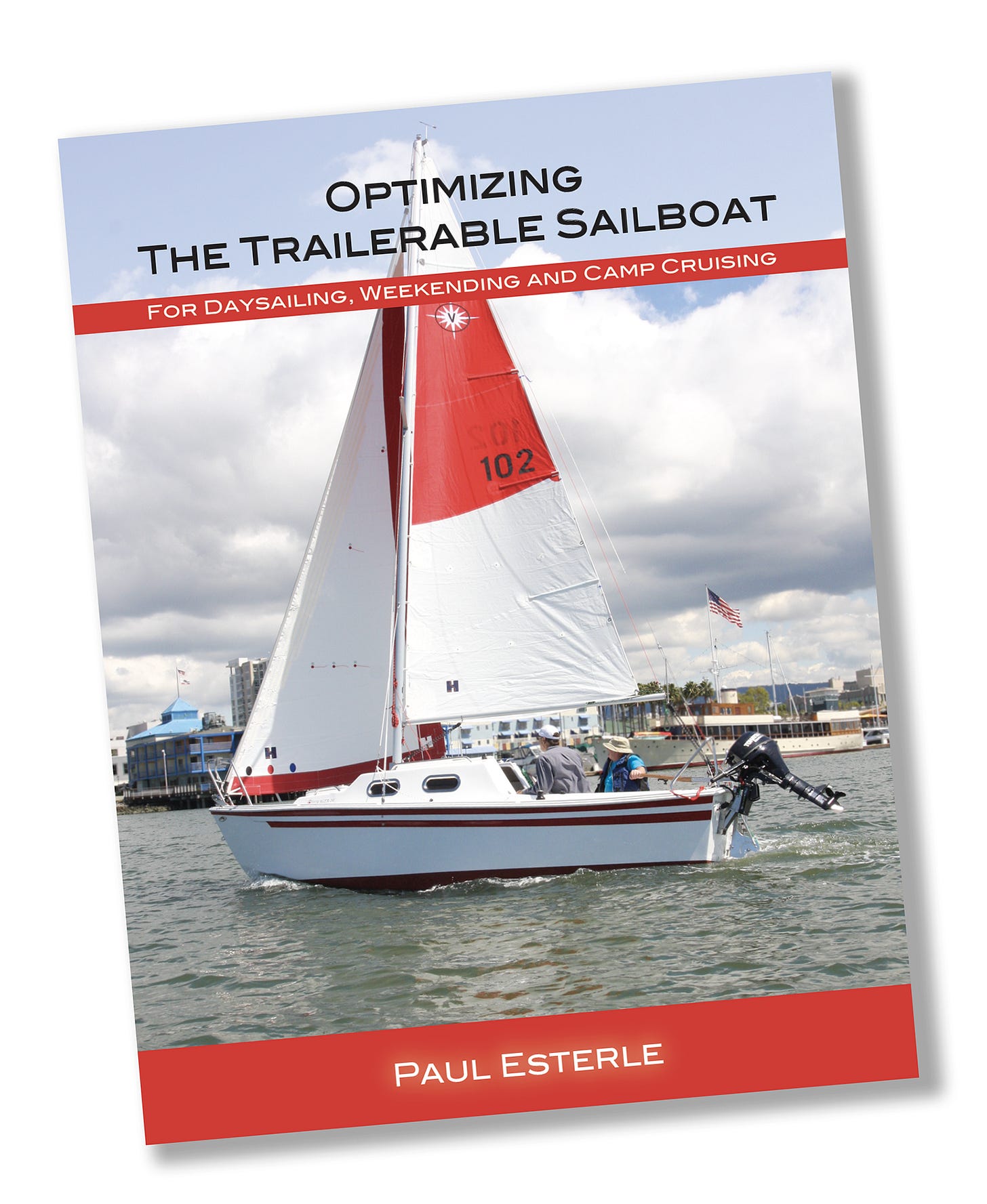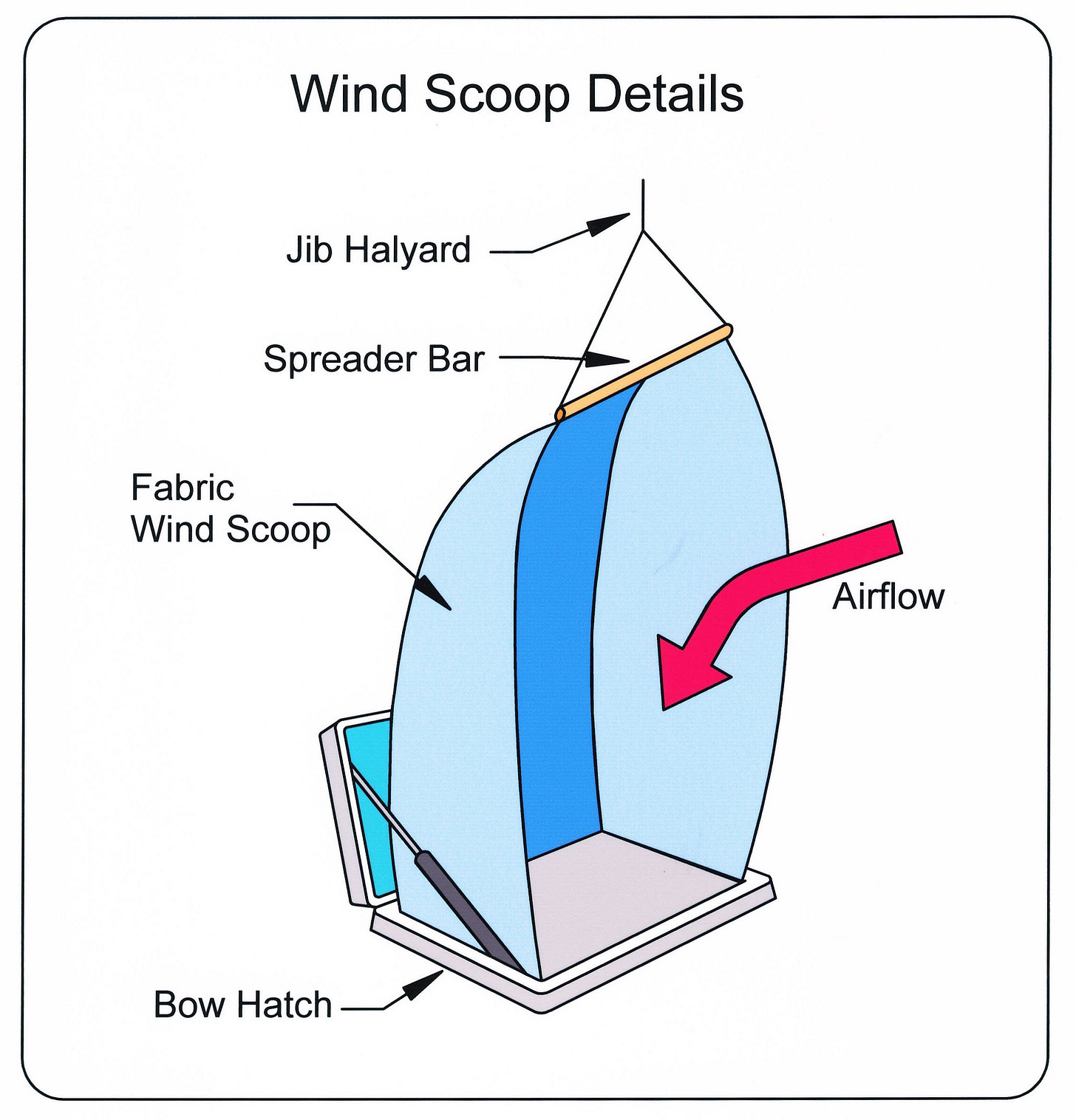We just reprinted a small batch of Paul Esterle’s book, Optimizing The Trailerable Sailboat.
This 8.5 x 11” large-format book is 325 pages and covers topics like: cabin steps, boat hooks, heaters, fire extinguishers, replacing bulkheads, stoves, coolers, A/C and D/C electrical systems, taming the tiller, anchor mounting, solar vents, anti-fouling paint, hull graphics, boarding ladders, blisters, painting the boat, changing lower unit oil, the Gerr jib downhaul, roller furlers, reefing, mast-raising tips, trailer bearings and dozens of other topics—including hundreds of photos and illustrations.
The books can be ordered here. We will also give away a free copy—just comment “interested” below to be included in the drawing next week.
Meanwhile, here is one short article excerpted from the book. —Eds
Wind Scoop
I had already set Ternabout up with screens over the bow hatch and the companionway as well as outfitted her with both A/C and D/C fans. There was, however, one further upgrade for improved ventilation to add—a wind scoop (often called a “ventilating sail.”)
A wind scoop is a three-sided fabric device that fits around the bow hatch and directs air down that hatch. It works especially well when the boat is anchored and headed into the wind. Any breeze at all is captured and funneled through the boat.
I had looked at several designs in various how-to articles and in cruising books. (Here’s a webpage on making your own -Eds) After considering the time and effort involved in sewing one up myself, I elected to go to the local marine store and buy one off-the-shelf. It was well made and included a fabric storage bag. It was, however, somewhat generic it is mounting arrangements.
Back on Ternabout, I did a trial installation. The top of the wind scoop is hoisted using the jib halyard, while the open side of the base was designed with a dowel that was to be slipped inside the open hatch to keep it opened wide. The drawback to this plan was that I had installed an interior screen for the bow hatch. I didn’t want to gain a cooling airflow at the expense of allowing the flying and biting insects inside the boat.
It took some trial and error, but I finally came up with a solution that allowed me to use the wind scoop without interfering with the screen. I cut two half-inch diameter wooden dowels the width of the wind scoop. I then screwed screw eyes into the ends of the dowels and tied a piece of eighth-inch bungee cord between the ends of the dowels.
I drilled two holes near the center of each dowel and threaded a piece of bungee through the holes, tying a knot at each end. One dowel was tied to the front two corners of the scoop while the other was fastened across the back of the scoop.
To rig the wind scoop, I would hoist the scoop loosely with the halyard. One dowel and the back of the scoop would slip behind the open hatch. The other dowel was stretched forward on the bungee cords. The small loop of bungee cord was then slipped over the hatch hook in the center of the forward face of the hatch opening. This held everything securely in place as I hauled the top of the scoop tight with the halyard.
The beauty of this system is that I can reverse the wind scoop; putting the opening facing aft instead of forward should I be at a dock with the wind blowing in the opposite direction.
The scoop works extremely well in everything except a rainstorm. Then it’s time to break out the bow awning. •SCA•





Congrats to Bruce Lyle, who won our random drawing for the book copy.
Interested
I have a off the shelf one and it’s never worked well, have an idea to modify it from this. Thanks